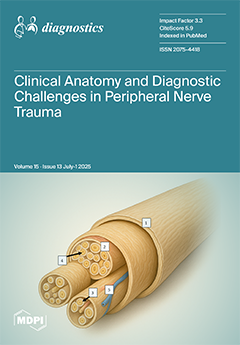Background: Although contemporary stent technology has significantly evolved, a substantial number of patients present with stent failure (SF), the clinical expression of which is either in-stent restenosis (ISR) or stent thrombosis (ST).
Methods: In this observational, single-center study, we aimed to compare the clinical characteristics, clinical presentation, angiographic findings and subsequent management of patients who underwent percutaneous coronary intervention (PCI) for SF, either ISR or ST, with patients who had PCI for de novo lesions.
Results: Over a period of two years (September 2022–October 2024), 1120 patients underwent PCI, of whom 9% had SF. Of the 101 SF cases, the majority (76 cases, 75%) had ISR, while the rest (25 cases, 25%) had ST. Regarding baseline characteristics, patients who underwent PCI for SF had a higher incidence of diabetes mellitus (53% vs. 29%;
p < 0.001), dyslipidemia (88% vs. 50%;
p < 0.001) as well as prior coronary artery bypass grafting surgery (7.9% vs. 3.7%;
p = 0.043), while they were less likely to be current smokers (33% vs. 52%;
p < 0.001). SF PCI patients presented more frequently with unstable angina (17% vs. 8.9%;
p = 0.010). A new stent was implanted in less than half of SF cases (i.e., stent implantation, 44% vs. 91%;
p < 0.001). On the other hand, in the clinical setting of SF, drug-coated balloons (44% vs. 5.3%;
p < 0.001) and plain balloon angioplasty (8.9% vs. 0.7%;
p < 0.001) was applied more frequently compared with de novo lesions. Furthermore, the usage of cutting/scoring balloons and lithotripsy was significantly higher in the SF group (8.9% vs. 0.4% and 12% vs. 3%, respectively;
p < 0.001 for both). Intracoronary imaging guidance was more commonly used in the SF group (33% vs. 13%;
p < 0.001). Stent malapposition (44%) and neoatherosclerosis (67%) were the most common mechanisms of ST and ISR, respectively, as identified by intravascular imaging modalities. Finally, the success rates were comparable (96% vs. 98%;
p = 0.150) between the two groups.
Conclusions: Approximately one of ten patients underwent PCI because of the failure of a previously implanted stent. Use of intracoronary imaging is significantly higher in the clinical context of SF. While DES implantation remains the standard of practice for de novo lesions, DCBs are a popular alternative, especially for ISR cases. Interventional cardiologists who are involved in the treatment of SF cases should be familiar with interpreting intravascular imaging to guide the use of the adjunctive device required to ensure that optimal procedural results in SF cases are obtained.
Full article






